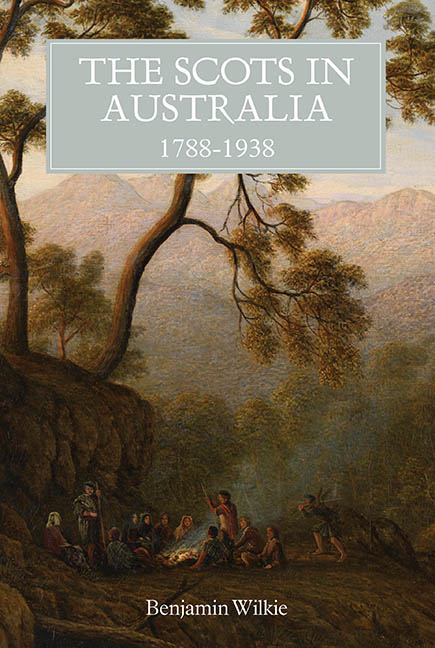Book contents
- Frontmatter
- Contents
- Illustrations
- Acknowledgements
- Abbreviations
- Introduction
- 1 From Scotland to Australia: Convicts, Free Settlers, and Encounters with Australia
- 2 Caledonia Australis: Imperial Commerce, Migrant Networks, and Australian Pastoralism
- 3 Scottish Migrants and Indigenous Australians
- 4 Imagining Home: Scottish Culture in Australia
- 5 Warriors of Empire: A Case Study of Popular Imperialism
- 6 The Empire Builders: Imperial Commerce and Migration between the Wars
- 7 New Scots: Industry, Settlement, and Working-Class Migration
- 8 At The Edge of Scotland's Diaspora: Diversity and Tension in the Twentieth Century
- Conclusion: The Imperial Legacy
- Bibliography
- Index
5 - Warriors of Empire: A Case Study of Popular Imperialism
Published online by Cambridge University Press: 23 August 2019
- Frontmatter
- Contents
- Illustrations
- Acknowledgements
- Abbreviations
- Introduction
- 1 From Scotland to Australia: Convicts, Free Settlers, and Encounters with Australia
- 2 Caledonia Australis: Imperial Commerce, Migrant Networks, and Australian Pastoralism
- 3 Scottish Migrants and Indigenous Australians
- 4 Imagining Home: Scottish Culture in Australia
- 5 Warriors of Empire: A Case Study of Popular Imperialism
- 6 The Empire Builders: Imperial Commerce and Migration between the Wars
- 7 New Scots: Industry, Settlement, and Working-Class Migration
- 8 At The Edge of Scotland's Diaspora: Diversity and Tension in the Twentieth Century
- Conclusion: The Imperial Legacy
- Bibliography
- Index
Summary
Military prowess formed a central pillar of Scottish national identity in the nine¬teenth century. Although Scottish Highland regiments had been prominent in the British military forces from the early eighteenth century, their fame and public profile increased in the Victorian era and they become even more celebrated as Scot¬land's national icons. As a core ideological focus for British imperial identity, mili¬tarism took on distinctive national characteristics in Scotland during the nineteenth century. The regiments attracted extensive publicity in British imperial artworks, advertising, and in the press; they were the most celebrated of imperial soldiers. The growing ‘Victorian cult of the Highlander’ in the nineteenth century was also the result of the royal patronage and Scotophilia of Queen Victoria, who took a special interest in the Scottish Highlands and ‘her’ Highland regiments. Scottish military activity became increasingly ‘Highlandised’, and in 1881 even Lowland regiments were outfitted with Highland dress – although some had adopted pipe bands and Highland regalia in previous decades. Despite the visibility and vibrancy of Scotland's martial traditions throughout the British Empire, however, military Scottishness is an often neglected aspect of the experience of Scots abroad and the ways in which they connected with and imagined home.
The cult of the Highlander spread into the global Scottish diaspora towards the end of the nineteenth century. Numerous Scottish regiments formed part of voluntary and part-time defence forces in Canada, New Zealand, South Africa, and Australia from the 1860s. The last British forces withdrew from Australia in 1870 and in their place the colonies raised their own armies and militia. Numerous Scottish units were established including the Scottish Company of the Adelaide Regiment of Volunteer Rifles (1866), the Duke of Edinburgh's Highlanders in Sydney (1868), and the Sydney Reserve Corps of Scottish Rifles (1885). The Scottish Volunteer Rifle Corps of Queensland emerged in 1896, and the South Australian Scottish Company in 1899, while there were Scottish detachments of militia units in Western Australia throughout the 1890s.
Examined within the same category as St Andrew's associations, Caledonian societies, Burns clubs, and so on, it is clear that Scottish regiments in Australia drew their culture and identity from a distinctly imperial tradition.
- Type
- Chapter
- Information
- The Scots in Australia, 1788–1938 , pp. 91 - 104Publisher: Boydell & BrewerPrint publication year: 2017



